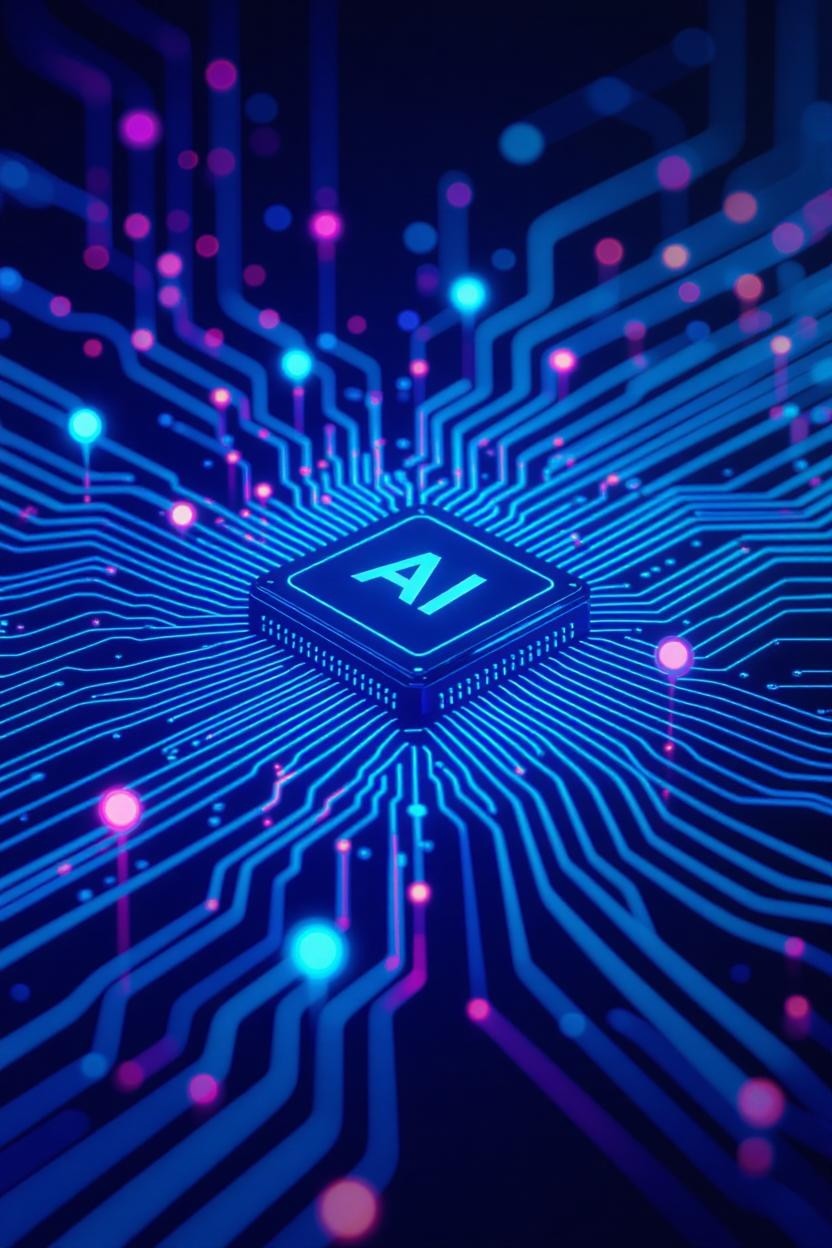
The Enterprise AI Ecosystem: Building Comprehensive Intelligence Networks
The Enterprise AI Ecosystem: Building Comprehensive Intelligence Networks
In our research at Adaptivearts.ai, we’ve observed a fundamental shift in how organizations approach artificial intelligence. The era of isolated AI tools is ending. Forward-thinking organizations are now building comprehensive AI ecosystems-integrated networks where every process, decision, and interaction is intelligently augmented.
Beyond Point Solutions
The traditional approach of implementing AI as discrete tools for specific problems is rapidly becoming obsolete. Our research reveals why:
The Integration Challenge
When AI tools operate in isolation, organizations face:
- Data Silos: Valuable insights trapped in departmental boundaries
- Redundant Efforts: Multiple teams solving similar problems independently
- Inconsistent Quality: Varying levels of AI sophistication across the organization
- Limited Scale: Point solutions that can’t grow with organizational needs
The Ecosystem Advantage
In contrast, organizations building AI ecosystems report dramatic improvements:
- Unified Intelligence: Shared knowledge across all AI systems
- Compound Learning: Each AI interaction improves the entire system
- Consistent Excellence: Standardized quality across all applications
- Exponential Scale: Network effects that multiply value with each addition
Anatomy of an AI Ecosystem
Through extensive case studies, we’ve identified the core components of successful AI ecosystems:
1. Foundation Layer
The bedrock of any AI ecosystem consists of:
- Standardized APIs: Common interfaces for all AI interactions
- Shared Data Infrastructure: Unified data lakes and knowledge graphs
- Security Framework: Comprehensive protection across all touchpoints
- Governance Protocols: Clear rules for AI deployment and usage
2. Intelligence Layer
The cognitive capabilities that power the ecosystem:
- Model Orchestra: Multiple AI models working in concert
- Prompt Libraries: Curated collections of effective prompts
- Learning Loops: Continuous improvement mechanisms
- Context Management: Maintaining coherent understanding across interactions
3. Application Layer
Where AI meets organizational needs:
- Process Automation: Intelligent workflow orchestration
- Decision Support: Real-time analytics and recommendations
- Creative Augmentation: Tools that amplify human creativity
- Customer Intelligence: Deep understanding of user needs and behaviors
4. Human Interface Layer
The critical connection between people and AI:
- Intuitive Interfaces: Natural interaction paradigms
- Transparency Tools: Understanding AI decisions
- Feedback Mechanisms: Human guidance for AI improvement
- Skill Development: Continuous learning for human partners
Research Findings: The Multiplier Effect
Our analysis of organizations with mature AI ecosystems reveals a fascinating phenomenon we call the “multiplier effect”:
Productivity Multipliers
- Individual Level: 3-5x productivity gains
- Team Level: 8-12x efficiency improvements
- Organizational Level: 25-39x overall performance enhancement
These aren’t incremental improvements-they represent fundamental transformations in organizational capability.
Innovation Acceleration
Organizations with AI ecosystems report:
- Product Development: Cycles compressed from months to weeks
- Market Response: Real-time adaptation to customer needs
- Research Velocity: 10x increase in hypothesis testing and validation
- Creative Output: Unlimited scaling of content and design generation
Implementation Patterns
Through our research, we’ve identified successful patterns for ecosystem development:
The Nucleus Approach
Start with a core use case and expand concentrically:
- Establish a high-value pilot project
- Build foundational infrastructure
- Add adjacent capabilities
- Create network connections
- Scale across the organization
The Federation Model
Multiple teams build compatible systems that eventually merge:
- Establish common standards
- Enable autonomous development
- Create integration points
- Federate successful implementations
- Unify under common governance
The Platform Strategy
Build a central platform that others can extend:
- Create core infrastructure
- Develop standard interfaces
- Enable third-party development
- Manage marketplace dynamics
- Evolve through community contribution
Challenges and Solutions
Our research also identifies common challenges in ecosystem building:
Technical Challenges
- Integration Complexity: Solved through standardized protocols
- Performance Optimization: Addressed with distributed architectures
- Security Vulnerabilities: Mitigated through defense-in-depth strategies
Organizational Challenges
- Change Resistance: Overcome through demonstration of value
- Skill Gaps: Bridged with comprehensive training programs
- Governance Issues: Resolved through clear frameworks and accountability
Ethical Considerations
- Bias Amplification: Countered with diverse training data and regular audits
- Transparency Demands: Met with explainable AI techniques
- Privacy Concerns: Addressed through privacy-preserving technologies
Future Directions
Our ongoing research explores several frontier areas:
Autonomous Evolution
AI ecosystems that can extend and improve themselves without human intervention, creating new capabilities based on observed needs.
Cross-Organizational Networks
Ecosystems that span multiple organizations, creating industry-wide intelligence networks while preserving competitive advantages.
Human-AI Symbiosis
Deep integration between human and artificial intelligence, where the boundary between human and machine capabilities becomes fluid.
Research Implications
The shift to AI ecosystems represents more than technological evolution-it’s a fundamental reimagining of organizational intelligence. Key implications include:
- Competitive Dynamics: Organizations without AI ecosystems face existential competitive disadvantages
- Labor Evolution: Every role becomes AI-augmented, requiring new skill development
- Innovation Paradigms: The pace and scale of innovation accelerate beyond traditional constraints
- Ethical Imperatives: The power of AI ecosystems demands robust ethical frameworks
Conclusion
The transition from isolated AI tools to integrated ecosystems marks a pivotal moment in organizational evolution. Our research suggests this isn’t merely an option for forward-thinking organizations-it’s becoming a requirement for competitive survival.
As we continue studying these emerging patterns, one thing becomes clear: the organizations that master AI ecosystem development will define the next era of business and innovation. The question isn’t whether to build an AI ecosystem, but how quickly and effectively it can be accomplished.
The research continues, but the direction is clear: the future belongs to those who can orchestrate intelligence at ecosystem scale.
This article is based on ongoing research from “From Blueprint to Application: The Complete Guide to Enterprise Prompt Engineering” by Fredrik Bratten and co-author Saša Popović, available through HultMedia publishers. For more research insights, explore our Research Areas.